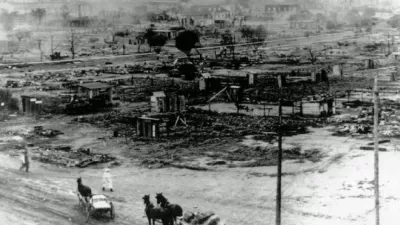In this article, Deneen Borelli argues that elite environmentalists are blocking access to natural resources that are abundant and in urgent need. As a result, higher costs of stricter energy requirements hit poor black communities the hardest.
"Despite the hype about wind power and boasts about other renewable energy sources, 85 percent of our nation's energy comes from fossil fuels. Energy from renewable sources such as wind and solar only currently provide about 7 percent of our power and cannot replace fossil fuels anytime soon.
In its September 2008 report, the federal Energy Information Agency predicted a 25 percent rise in heating oil prices and a 17 percent rise in natural gas prices this winter as well as a 9.5 percent projected increase in electricity costs in 2009. Adding to that, gasoline still hovers near $4 a gallon, and the public demands more domestic energy production. A recent Rasmussen poll of likely voters found that 67 percent supported new offshore fossil fuel exploration.
Our nation is blessed with an abundant supply of natural resources. The problem is that Congress, at the demand of Club Green, blocks access to these resources at the peril of families.
What's disturbing is that, like Gore, many of Club Green's leaders are among the elite. They are the wealthy, famous, politically-connected and largely immune to the sticker shock of high energy costs. "
FULL STORY: It Takes Green to Go Green

Depopulation Patterns Get Weird
A recent ranking of “declining” cities heavily features some of the most expensive cities in the country — including New York City and a half-dozen in the San Francisco Bay Area.

California Exodus: Population Drops Below 39 Million
Never mind the 40 million that demographers predicted the Golden State would reach by 2018. The state's population dipped below 39 million to 38.965 million last July, according to Census data released in March, the lowest since 2015.

Chicago to Turn High-Rise Offices into Housing
Four commercial buildings in the Chicago Loop have been approved for redevelopment into housing in a bid to revitalize the city’s downtown post-pandemic.

New Park Opens in the Santa Clarita Valley
The City of Santa Clarita just celebrated the grand opening of its 38th park, the 10.5-acre Skyline Ranch Park.

U.S. Supreme Court: California's Impact Fees May Violate Takings Clause
A California property owner took El Dorado County to state court after paying a traffic impact fee he felt was exorbitant. He lost in trial court, appellate court, and the California Supreme Court denied review. Then the U.S. Supreme Court acted.

How Urban Form Impacts Housing Affordability
The way we design cities affects housing costs differently than you might think.
City of Costa Mesa
Licking County
Barrett Planning Group LLC
HUD's Office of Policy Development and Research
Mpact Transit + Community
HUD's Office of Policy Development and Research
City of Universal City TX
ULI Northwest Arkansas
Town of Zionsville
Urban Design for Planners 1: Software Tools
This six-course series explores essential urban design concepts using open source software and equips planners with the tools they need to participate fully in the urban design process.
Planning for Universal Design
Learn the tools for implementing Universal Design in planning regulations.





















